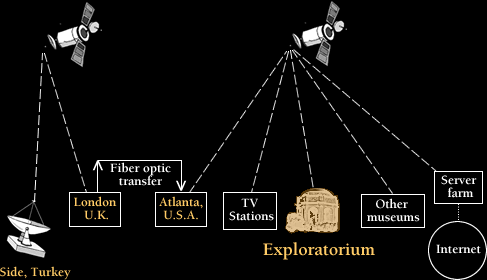|
|||||||||||||||||||||||
|
For this eclipse, we used four telescopes in the field: two in white light (1/4 disc and full disc) and two with hydrogen-alpha filters (1/4 disc and full disc). The white light telescopes captured magnified versions of what the human eye could see. The hydrogen-alpha telescopes filtered out a significant amount of light from the sun’s surface. They’re used before and after totality and provide a dramatic view of sunspots, prominences, and other solar features.
|
|
|
|||||||||||||||||||||
|
|||||||||||||||||||||||

|
|||||||||||||||||||||||
|
© Exploratorium
|
|||||||||||||||||||||||

